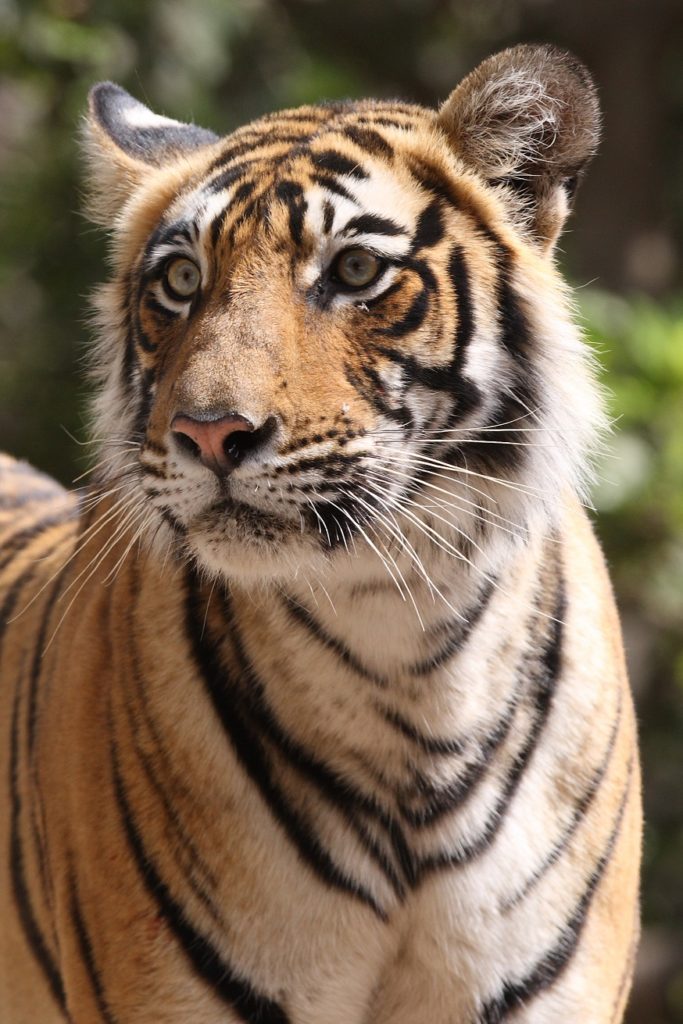Wildlife Week: We know there’s a way to save tigers – now we need the political will
What progress has there been since the 2010 International Tiger Forum in St Petersburg set out to double the wild tiger population by 2022, the next Year of the Tiger?
When you strip it down, saving wild tigers is about ensuring they have sufficient food, water, forest cover and protection from hunting – of themselves and their prey – in order to mate, for cubs to survive and for young to disperse, all without coming in to conflict with people.
Even before the ink was dry on the 2010 St Petersburg Declaration and the Global Tiger Recovery Program (GTRP), I had a sense of foreboding – it was easy to be swept along with the grand ambition of doubling the wild tiger population by 2022, then estimated at 3,200 tigers.

World Leaders at the International Tiger Forum, St Petersburg, Russia (c) EIAimage
I can’t deny that most of us attending the International Tiger Forum were buoyed with the positivity that comes when heads of state turn up to talk about tigers. At the same time, however, I had not forgotten that in the lead up to the Forum we had still not resolved some thorny issues that continue to be an obstacle.
Principle among those was that we are not all pulling in the same direction. I recall some of the early workshops where stakeholders from tiger range states, international NGOs, inter-governmental bodies and donors deliberated on the goals and objectives of the GTRP. We reached an impasse, with China refusing to acknowledge that committing to end “illicit demand” for tiger parts was nothing new; that the country was simply reiterating a common goal to end illegal trade, an obligation that comes with being a signatory to the Convention on International Trade in Endangered Species of Wild Fauna and Flora (CITES).
What tigers needed was a commitment to ending all demand, to remove all suggestion to consumers that there was still room for a ‘licit demand’. Sure enough, failure to achieve that has come back to haunt us, with the Chinese Government continuing to allow tiger farms to flourish and stockpiles of tiger parts to accumulate in private hands.

Tigers bred in captivity in China for trade (c) EIAimage
Policies treating tigers as a commodity have been allowed to persist and there has been a lack of the leadership required to ban all trade in trade in tiger parts and products, including from farmed tigers. Any efforts anywhere else to end demand have been undermined.
There is not one single use of a tiger body part that is essential to human life. Whether the uses are for medicine, ornamentation, talismans, virility or exotic food, it is all unnecessary luxury applications lining the pockets of criminals and tiger ‘farmers’. There are alternatives for each and every use.
In this day and age, the governments of consumer countries must surely have run out of excuses for propping up ‘licit demand’?
We are still not pulling in the same direction and the impact of stimulating demand rather than ending it has meant poaching and trafficking of other big cats has spiralled out of control – hundreds of leopards are being used annually in licensed medicines in China and African lion bone, teeth and claws are being passed off as tiger; even jaguars are being poached for their teeth to be turned into “tiger jewellery”.

The grim reality of tiger farming in China – carcasses in cold storage at Guilin Tiger & Bear Farm (c) Belinda Wright
Last year’s move by the China State Council to repeal a 1993 ban on the use of tiger bone and rhino horn was an indication that there is still a long way to go. What was encouraging was the domestic backlash from Chinese academics, traditional medicine practitioners and social commentators opposing the move. It hasn’t yet led to the desired outcome of a new State Council order which not only reinstates the prohibition against the use of tiger bone and rhino horn but extends it to include other big cats threatened by the trade and explicitly prohibits the use of farmed specimens.
It does, however, give hope of a movement within China to move away from outdated policies. A new philosophy from the highest levels of power in China could ripple among Chinese consumers in neighbouring countries and in that other major consumer of tiger parts, Vietnam.
Where has this left the tiger as we are almost 10 years into the GTRP? As much as one hates to play the numbers game, we are still at fewer than 4,000 wild tigers. Depending on whose science you believe, the wild population is somewhere between 3,840 and 3,963. In the same period, over 1,140 tigers have been seized, probably a fraction of those that have entered trade.

Tiger in the wild in India (c) Michael Vickers / tigersintheforest.co.uk
Since 2010, tigers have been wiped out from Cambodia, have become functionally extinct in Laos and Vietnam, reduced from an estimated 85 individuals in Myanmar in 2010 to just 22 individuals in 2019 and are down from an estimated 500 individuals in Malaysia in 2010 to fewer than 200 in 2019.
We are not exactly on track for doubling the wild tiger population by 2022 – but then, as the scientists remind us, did we really know how many tigers there were in 2010? Were there overestimates in many places? Probably – and in which case we will have endless debates about baselines.
So where do we find signs of hope? Are there places where tigers are finding mates, having cubs and those cubs are dispersing and surviving? Yes and, not surprisingly, we see this in south Asia where national philosophies and legislation have historically leaned towards protection and placing a higher value on the live wild tiger as opposed to the sum of its body parts.
That’s not to say things are perfect in south Asia! Where tigers are recovering and returning to areas they have not been seen in for several years, communities and officials have been unprepared. Lessons must be rapidly learned as to how to minimise conflict.
Without romanticising the notion, inspiration can be taken from communities that have found a way to cope with tigers, be that as a result of ancient cultural relationships or behaviour change interventions.

Tiger resting in the forest, India (c) Robin Hamilton
The alert from the Intergovernmental Science Policy Platform on Biodiversity and Ecosystem Services report this month is a timely reminder of how critical it is to maintain and expand the ecosystems upon which tigers and other endangered species depend; the same forests that secure water for millions of people and mitigate climate change. A new era of thinking is vital, one of integrated land-use planning and innovative solutions to development needs which bring an end to poorly planned roads, railways, mines and dams.
We may have to shift the goalposts in terms of timeframe but where there is a will there is clearly a way to bring wild tigers back.



